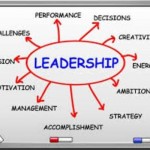The Senior Program Manager, will lead multi-disciplined teams managed by IT and Business Operations Projects Managers driving a large complex program of work. The jobholder will be responsible for financial/budgetary controls, program-wide resource requirements and program status reporting. Working closely with the client and commercial management teams on one of key client accounts. The jobholder will provide exemplary people management, monitoring and maintenance of governance standards and enforcing corrective action where required with consistent delivery of timely, concise, accurate and relevant communications to stakeholders from Board level to front line, internally and to client. (more…)
Author Archives: Larry Janis
Functional Architect
Unique opportunity to become a founding member of a new innovation team.
Want t o stop talking about what we’re going to do and actually be given the freedom to create rapid prototypes? Are you a developer/hacker/maker in your free time always exploring new technologies as they come out? We want people who are great at coding to try out new things, then hand off the top solutions to a team to industrialize the assets. Come build with us in the Breakthrough Ideas and Tech Garage, a techy startup-like team that is exploring new technologies to amp up our offerings. We are interested in people who can work in an agile fashion and help us quickly assess new technologies to determine their fit for BPO. We will be creating rapid prototypes and MVPs that allow us to get immediate client feedback to see if an idea has legs and should be invested in further. Work in a fast-paced agile environment to try out the newest and coolest tech and bring it to BPO clients. (more…)
o stop talking about what we’re going to do and actually be given the freedom to create rapid prototypes? Are you a developer/hacker/maker in your free time always exploring new technologies as they come out? We want people who are great at coding to try out new things, then hand off the top solutions to a team to industrialize the assets. Come build with us in the Breakthrough Ideas and Tech Garage, a techy startup-like team that is exploring new technologies to amp up our offerings. We are interested in people who can work in an agile fashion and help us quickly assess new technologies to determine their fit for BPO. We will be creating rapid prototypes and MVPs that allow us to get immediate client feedback to see if an idea has legs and should be invested in further. Work in a fast-paced agile environment to try out the newest and coolest tech and bring it to BPO clients. (more…)
Thinking Like a Leader: Three Big Shifts
Leadership development often focuses on doing — the mastering and use of certain desirable skills and behaviors that concretely show someone to be leading. Competency-based models can provide lists of such skills, as well as attributes of their practice. But where leadership effectiveness really starts is with thinking — adopting a mental model that makes it possible to acquire those skills and demonstrate those behaviors in the first place. Mastering leadership thinking can be challenging, but it is absolutely essential. I may adopt the exact stance and handgrip of Jordan Spieth, but I’m unlikely to win the Masters — while there may be a (wide) gap in our athletic abilities, there is an even larger one in our mental capacity for the game of golf.
Leadership thinking can be learned but is difficult to teach. It is a matter of asking questions and presenting challenges that help someone discover the mental model that enables their “best leader” to emerge. It requires not just competency, but demonstrated proficiency. And proficiency only comes with practice, feedback, and analysis. Journaling and other reflective exercises are good for processing and absorbing both successes and failures. As Peter Drucker said, “Follow effective action with quiet reflection. From the quiet reflection will come even more effective action.” (more…)
Jon Stewart, Superboss
by Sydney Finkelstein
This past February, when Jon Stewart announced his impending retirement from Comedy Central’s The Daily Show after sixteen years, the collective mourning began almost immediately. “I have this irrational feeling of sadness, bordering on hurt,” a commentator for Entertainment Weekly said. “I feel wounded. It’s not like a romantic break-up, per se—more like a childhood best friend announcing his family is moving away right before sixth-grade starts.”
“Sixth grade” referring to, of course, the upcoming Presidential election. How would the nation possibly cope without Stewart around to skewer the candidates? “Jon Stewart, we need you in 2016,” pleaded a headline in the New Yorker. His departure, said the magazine, killed the “last hope for bringing some rationality to the 2016 Presidential field.” Stewart’s opponents on the right disagreed, with Fox News’ Megyn Kelly proclaiming, “I don’t think overall he’s been a force for good.” (more…)
Create a Conversation, Not a Presentation
by John Coleman
When I worked as a consultant, I was perennially guilty of “the great unveil” in presentations—that tendency to want to save key findings for the last moment and then reveal them, expecting a satisfying moment of awe. My team and I would work tirelessly to drive to the right answer to an organization’s problem. We’d craft an intricate presentation, perfecting it right up until minutes or hours before a client meeting, and then we’d triumphantly enter the room with a thick stack of hard copy PowerPoint slides, often still warm from the printer.
But no matter how perfect our presentation looked on the surface, we regularly came across major issues when we were in the room. These one-sided expositions frequently led to anemic conversations. And this hurt our effectiveness as a team and as colleagues and advisers to our clients. (more…)





